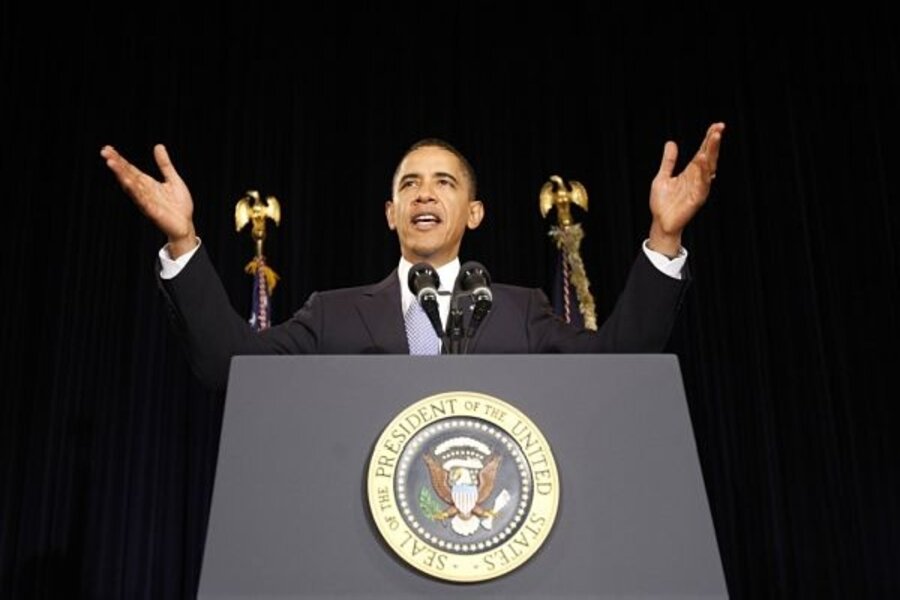ECONOMIC SCENE: Did Obama's stimulus plan work?
Loading...
With economic statistics suggesting the recession has ended, a new debate is heating up over the role of the big US stimulus package. Did it help speed the economic revival or not? The conclusions are flying fast – and they’re contradictory.
It “had a substantial positive impact on the growth of real gross domestic product (GDP) and on employment in the second and third quarters,” President Obama’s Council of Economic Advisers (CEA) concluded in a Sept. 10 report.
“It didn’t [work],” says Brian Riedl, an economist at the conservative Heritage Foundation in Washington.
All of this is a bit premature, of course. It takes time for $787 billion to wend its way through the economy – and even more time to track it.
Four-fifths of the stimulus money hasn’t been spent yet. The CEA concedes its 42-page report draws from a wide variety of estimates – estimates that concur, by and large – but not hard numbers: “It must ... be regarded as preliminary and understood to be subject to considerable uncertainty.”
Still, you can’t pump $151 billion into the economy and not see something.
For instance, the bill gave fiscal relief to the states, most facing large budget shortfalls. It thereby averted in some degree layoffs of state and municipal workers.
The White House agency holds that these outlays played “a key role” in changing the economic trajectory. It suggests that the stimulus effort added “roughly 2.3 percentage points to real GDP growth in the second quarter and is likely to add even more to growth in the third quarter.” The stimulus probably added between 600,000 and 1.1 million jobs (relative to what would have happened without stimulus) as of the third quarter.
All of this is a shell game, counters Mr. Riedl. The rescue money comes from taxpayers or other parts of the economy and thus has no positive impact on the economy, he maintains. “It’s totally zero-sum.”
One factor that will ultimately determine the effect of the stimulus is what economists call “the multiplier effect.” If taxpayer money pays someone to build a bridge, the builders spend a share of that money on, say, clothes or a flat-screen TV. This gives the clothing and electronics retailers more money to spend as they see fit. And so on.
If the stimulus works well, the money will turn over several times. If it doesn’t, the government funds will have little oomph.
The stimulus was poorly designed and not very large in relation to GDP, argues Harvard University economist Benjamin Friedman. Thus, the impact on the economy “should be modest.”
Yet the package stands as the largest stimulus effort in US history, at 2 percent of 2009 GDP. Moreover, it is larger than most of the 20 national stimulus packages passed this year, such as Britain’s (1.5 percent of GDP), Canada’s (1.7 percent), and Italy’s (0.1 percent). The US effort is topped by only a few, including South Korea’s (3 percent), Russia’s (2.9 percent), China’s (2.6 percent), and Japan’s (2.4 percent).
In the US, 75 percent of the package is supposed to be deployed in the first 18 months – that is, before the end of 2010. So the next few months could be telling.
“It’s very early to make a final or quasi-final judgment” on whether the package provided a good boost to the economy, says Anne Vorce, an economist at the Committee for a Responsible Federal Budget, a bipartisan Washington group pushing for taming the budget deficit. Nonetheless, she figures the cost of stimulus action was lower than the cost of inaction would have been.





